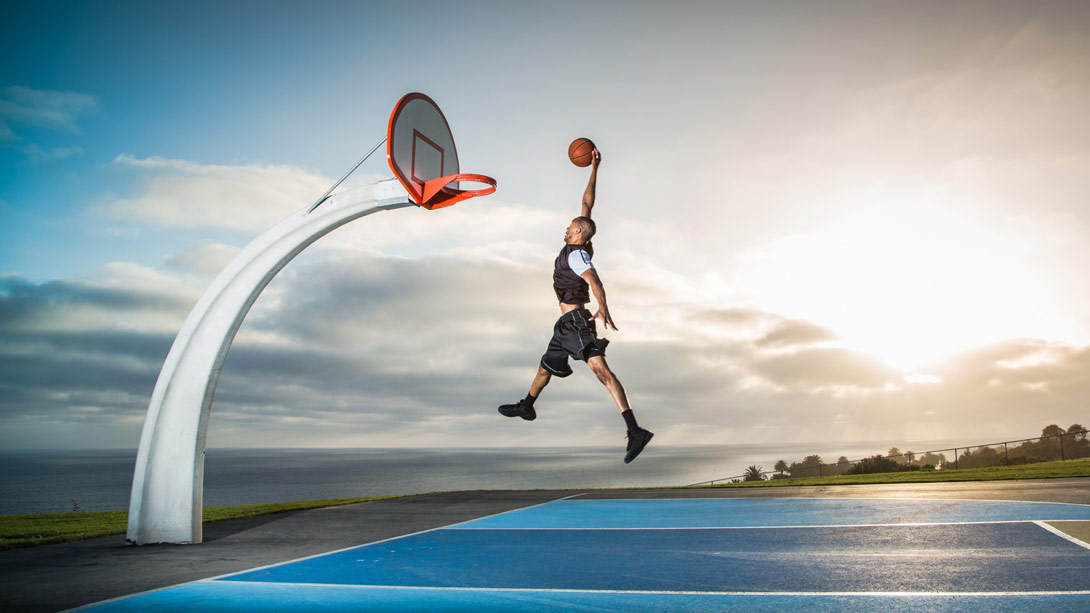Home »
Misc »
How to practice jumping higher for basketball
How to practice jumping higher for basketball
6 Exercises and Tips to Improve Your Vertical Jump
Learning to jump higher can improve your performance in activities like basketball, volleyball, and track and field. You’ll also gain power, balance, and agility, which can benefit all your movements — both functional and athletic.
There are several exercises you can do to increase the height of your vertical jump. Continue reading for instructions on how to perform them correctly and tips to help you jump higher, plus additional ways to get fit.
Here are a few exercises and tips that can help you improve your vertical jump. To see the most improvement, do these exercises consistently. Experiment to see which ones give you the best results.
1. Jumping jacks
Jumping jacks are a type of plyometric exercise that can help you jump higher by building lower body strength. They also elevate your heart rate while shifting your body out of its usual plane of movement.
This exercise is beneficial for improving performance in activities that require you to quickly move in different directions.![]()
How to do it:
- Stand with your feet hip-width apart and your arms alongside your body.
- Jump up and spread your feet apart.
- At the same time, raise your arms overhead to bring your palms nearly together.
- Jump back to the starting position.
- Do 2–5 sets of 10–20 reps.
2. Single-leg deadlifts with jump
This advanced exercise builds stability as you explosively jump up using one leg at a time. If this move is too difficult, first try mastering the plyo reverse lunge with jump.
How to do it:
- From standing, extend your right foot behind you. If possible, keep your foot from touching the floor.
- Lean forward and align your torso so that it’s parallel to the floor.
- Extend your right hand down toward the floor.
- Raise your right foot behind you to hip height.
- Explosively jump up straight, lifting your left foot.
- At the same time, raise your right knee in front of you and extend your left arm overhead.
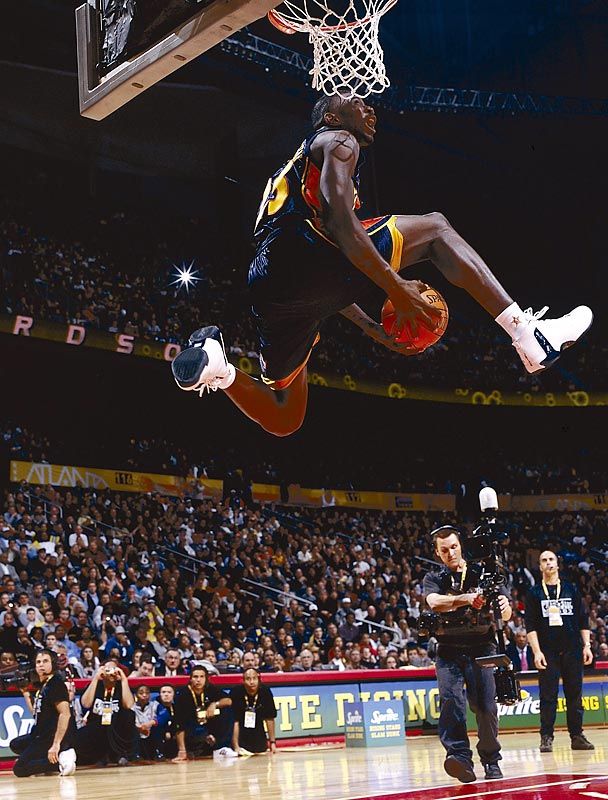
- Return to the starting position.
- Do 2–4 sets of 3–10 reps on each side.
3. Burpees
This exercise builds strength, endurance, and cardio fitness. Burpees work your entire body, giving you the power to jump explosively. If you’d like to make them easier or more challenging, you can experiment with burpee variations.
How to do it:
- Stand with your feet shoulder-width apart, then drop your hips back and down into a squat position.
- Press your palms into the floor in front of you, just inside your feet.
- Jump, walk, or step both feet back into a high plank.
- Do a pushup.
- Jump, walk, or step both feet forward toward your hands until you’re back in a squat.
- Explosively jump up and extend your arms overhead.
- Do 1–2 sets of 10–16 reps.
4. Forward linear jumps
This exercise targets your core, hips, and thighs. Forward linear jumps allow you to practice jumping forward as well as upward. To intensify this exercise, perform the next jump as soon as you land rather than returning to the starting position.
To intensify this exercise, perform the next jump as soon as you land rather than returning to the starting position.
How to do it:
- Stand with your feet directly under your hips and your arms alongside your body.
- Engage your core while drawing your shoulder blades back and down.
- Drop your hips back and down into a squat position.
- Keep your elbows straight as you extend your arms behind you.
- Jump forward, pushing with your feet and straightening your legs. At the same time, extend your arms overhead.
- Pull your legs forward as you land. To reduce the impact, bend your knees and hinge your hips slightly forward, lowering into a squat position. Keep your gaze on your landing place.
- Once you land, stand up to return to the starting position.
- Do as many reps as you can with proper form.
5. Squat jumps
For this exercise, you’ll use the strength of your torso, hips, and legs to jump explosively.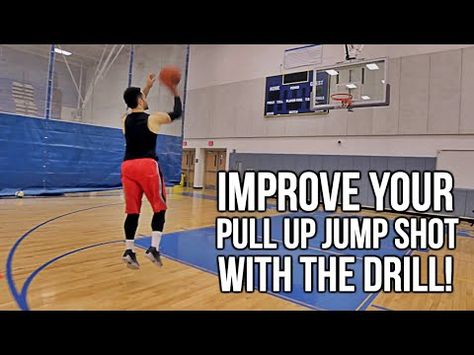 Once you’ve mastered squat jumps and are ready to take it to the next level, you can do weighted squat jumps using a barbell, trap bar, or pair of dumbbells.
Once you’ve mastered squat jumps and are ready to take it to the next level, you can do weighted squat jumps using a barbell, trap bar, or pair of dumbbells.
How to do it:
- Stand with your feet hip-width apart and your arms alongside your body.
- Draw your shoulders and shoulder blades down.
- Engage your core to keep your lower back straight. Keep your knees slightly bent.
- Slowly lower your hips down and back into a squat position until your heels nearly raise from the floor.
- Hinge forward slightly at your hips to keep your spine straight.
- Pause for a moment in the lower position.
- Explosively jump up through your ankles, knees, and hips at the same time.
- While in the air, draw your knees up toward your torso.
- Land as gently as possible on the middle of your foot before shifting your weight back toward your heels. To help absorb the impact, move your hips back and down as you land.
- Do 2–4 sets of 6–12 reps.

6. Rebounding
Rebounding is a type of aerobic exercise that is performed on a mini-trampoline. It’s a great way to experience the feeling of jumping and being in midair while putting less stress on your joints.
You can try several trampoline exercises if you’re interested in rebounding. You can spend a few minutes on each type or focus on one exercise for a longer period of time. You can also try:
- Jogging. Start with a simple jog to get comfortable on the trampoline. You can either keep your back straight or lean backward a little while raising your knees. Start off by lifting your knees only a few inches. As you progress, raise your knees as high as your hips or chest.
- Intervals. For 20 seconds, intensely jump up and down or side to side, or do jumping jacks. Then, rest or jump slowly for 10 seconds. Do at least 7 intervals. Gradually increase the duration of the work phase to a minute or longer.
Here are a few pointers to help you jump higher:
- Warm up your body before performing jumping exercises.
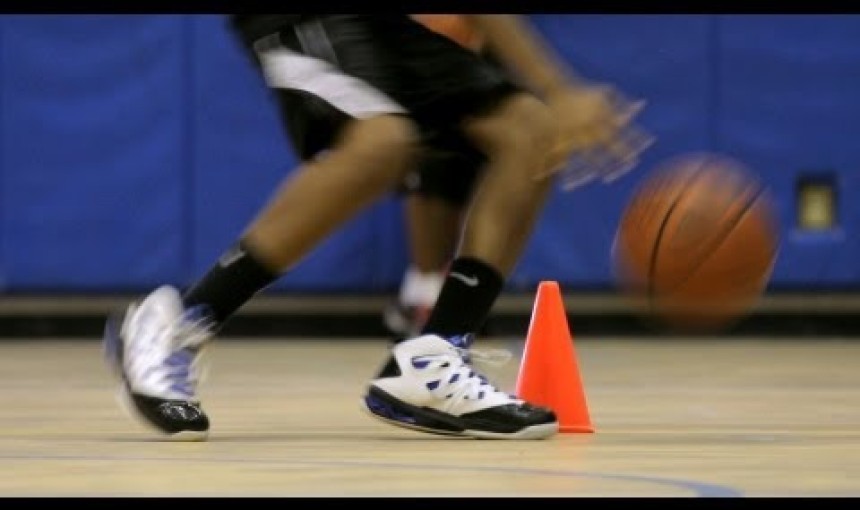
- For each exercise, perfect your form before increasing the height of your jump.
- Maintain a slight bend in your knees.
- Land softly and gently. If the impact of landing puts stress on your body, place foam tiles or cushions on the floor beneath you.
- Use the momentum of your arm swing to help pull your body higher.
- When jumping and landing, keep your feet at the same level.
- When you land, always distribute your weight equally between both sides of your body.
In addition to jumping exercises, make cardiovascular and strength training a part of your fitness program by including these types of training sessions in your weekly routine.
Cardio fitness promotes overall health and makes daily activities easier. Plus, it reduces stress levels, boosts mental function, and improves circulation.
Building muscular strength lends more power to all your movements. It can also help manage chronic health concerns, strengthen your bones, and improve your overall quality of life.
To improve your performance and move with greater ease, do joint mobility exercises, either on their own or as a warmup to your workout. These dynamic stretches will help you improve strength and flexibility, which has a positive effect on your range of motion. This may also help improve your jumping height and speed while reducing pain.
Talk with a fitness professional or coach if you are new to exercise or want additional guidance on meeting your fitness goals. A personal trainer might be beneficial if you have any health concerns or injuries that may affect your fitness ability. This can include hip, knee, or ankle concerns.
A professional can decide which exercises are most appropriate for you. They’ll create a custom routine based on your fitness level and goals. It’s important to learn how to do jumping exercises correctly and safely.
Some jumping exercises are high impact, and they have the potential to stress or injure your body. A personal trainer can help you modify any challenging exercises, provide you with constructive feedback, and teach you proper form.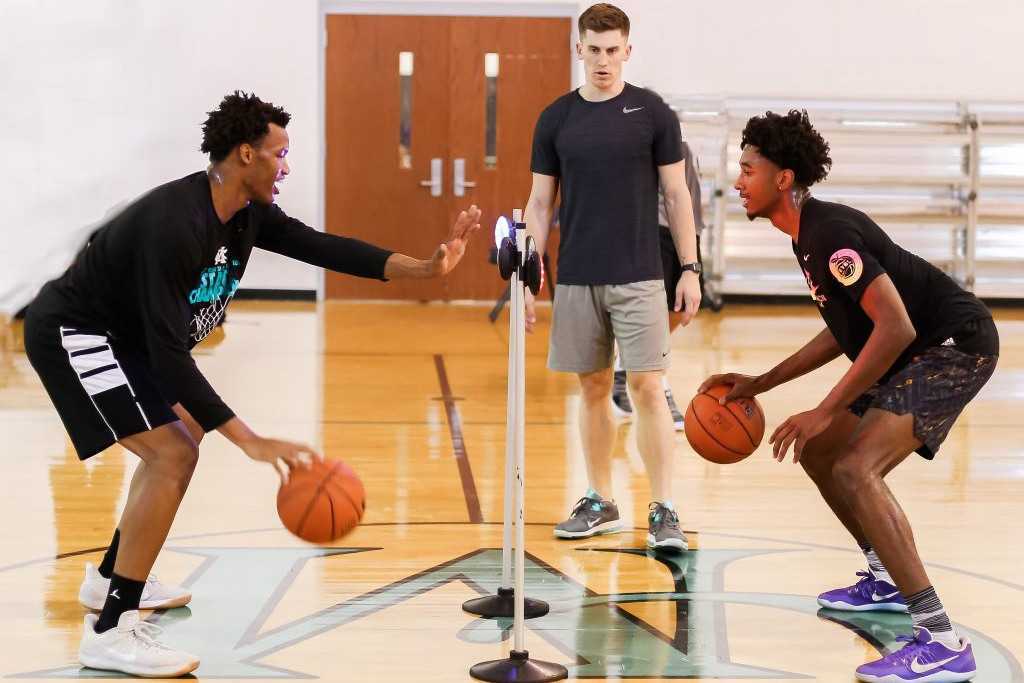
These exercises and tips can help you jump higher while improving your stability, strength, and agility.
In addition to jump training, include cardio and strength training sessions in your weekly routine. Try to do at least 30 minutes of moderate-intensity exercise each day.
For the greatest benefit, allow your body enough time to recover between workouts. Keep track of your progress and modify your training program if necessary.
7 Exercises to Improve Jump and Agility
In basketball, having a strong vertical jump and flash-like agility isn’t an option, it’s a requirement. If you are having trouble with your vertical jump or agility, just practicing lay-ups and running laps around the court doesn’t mean you will get any better. When you want to jump higher and have insane side-to-side agility reflexes, you need to base your basketball skills training on the best and most proven exercises. Here is a basketball skills training program that must be in your weekly workouts for explosiveness.
7 Basketball Skills Training
1. Jump SquatsThis upgraded version of the traditional fitness exercise is sure to skyrocket your vertical jump. What’s more, it develops explosive power that will easily come in handy with your agility on the court. It activates the fast-twitch fibers of several major muscle groups in the lower body including the quadriceps, hamstrings, glutes, hip flexors, and calves. If you want to jump higher, these are a must.
How to Perform: Stand tall with your feet at shoulder-width distance. Keep your chest up as you bend at the knees and sit back as if you’re about to sit in a chair. Once your thighs reach parallel, push through your heels in an explosive jump straight up in the air. Land softly and immediately go into your next jump squat.
Ability Focus:
- Vertical Jump
- Explosive Power
2. Tuck Knee JumpsAnother great way to increase your explosive power, tuck knee jumps aren’t just a way for you to jump higher. They also demand lower body control to bring the knees up, touch the chest, and return before you land. This exercise will increase coordination, fast-twitch fiber control, and, of course, all-out power.
They also demand lower body control to bring the knees up, touch the chest, and return before you land. This exercise will increase coordination, fast-twitch fiber control, and, of course, all-out power.
How to Perform: Stand tall with your chest up and feet at shoulder-width apart. Similar to the jump squat, you’ll start by bending slightly at the knees and driving your hips back only a little bit. From here, jump straight up into the air. Simultaneously flex your pelvis and bring your knees up towards your chest. Reverse the motion and land softly. Take a pause to correct any posture issues then perform the next repetition.
Focus:
- Vertical Jump
- Explosive Power
- Lower body control
3. Overhead Reaching JumpConsider this the next level of the jump squat. It will combine the explosive upward motion of the jump squat with a standard overhead reach that is all too common in your sport.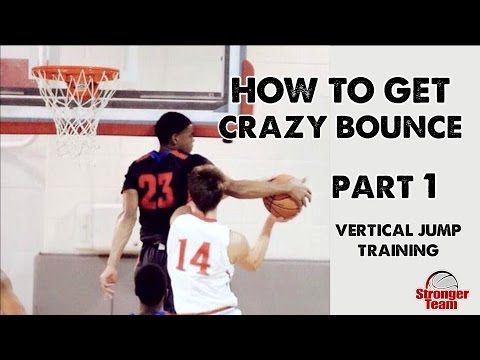 You might find that you can jump higher with this variation of the exercise from the momentum of the overhead reach itself. We don’t need to tell you how important a strong overhead reach is for defense and catching passes.
You might find that you can jump higher with this variation of the exercise from the momentum of the overhead reach itself. We don’t need to tell you how important a strong overhead reach is for defense and catching passes.
How to Perform: Stand tall with your chest up and feet at shoulder-width apart. Similar to the two exercises above, you’ll start by bending slightly at the knees and driving your hips back only a little bit. From here, jump straight up into the air. The big difference is that as you jump, you’ll simultaneously launch your hands skyward. As you descend, bring your hands into a defensive position close to the chest. Land soft, readjust your posture, and begin again.
Focus:
· Vertical Jump
· Explosive Power
· Reaching ability
4. Single-Legged Cross JumpsTraining your body, regardless of the athletic goal, requires a balance of multi-joint and isolation movements. When you isolate a muscle group, you are strengthening its ability to perform a specific movement, which in turn will support the larger muscle group movements.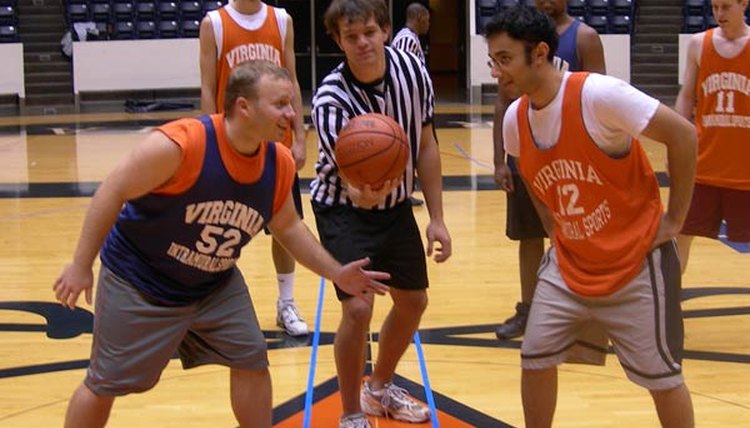 In this case of improving your jumping ability and agility, you’ll want to perform single-legged cross jumps.
In this case of improving your jumping ability and agility, you’ll want to perform single-legged cross jumps.
How to Perform: You will make the shape of a cross with thisjumping drill. Start on the left leg with the right leg tucked behind. With your chest up and core tight, leap forward with your left leg. While still facing forward, leap on your left leg to the left side and down. Now leap directly to the right, and finally back to the starting position. Switch legs and begin again.
Focus:
- Vertical Jump
- Explosive Power
- Agility
5. Wall Touches / Cone TapsLet’s focus more on the agility side of things, although explosive power will continue to be developed and improve your vertical jump. A classic athletic drill, wall touches or cone taps are great for developing those quick reflexes that will show in your improved agility.
How to Perform: Set up two cones a good distance apart from one another.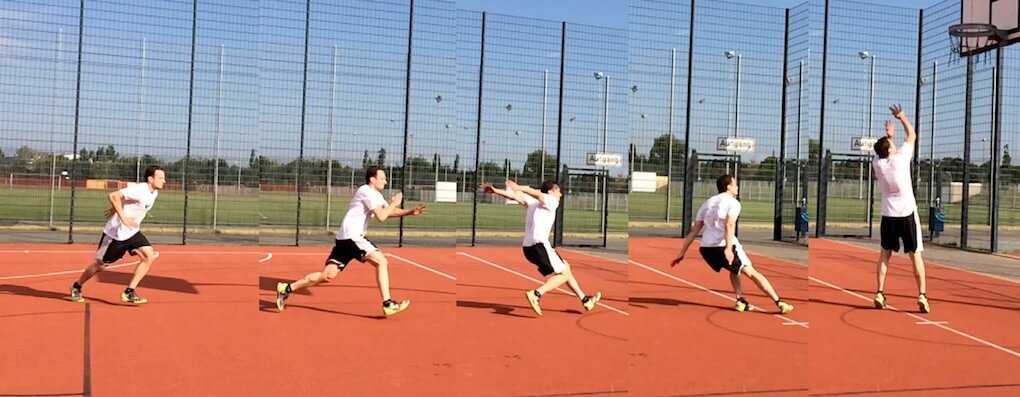 Begin in the middle of the cones. If you’re using walls, stand between two walls. An indoor racquet ball court works best. Sprint to your right as fast as you can, tap the cone or wall, then immediately change direction and do the same on the other side. You can vary the distances for each set that you do. If you’re using cones, you can also add a second or third pair in a ladder-like arrangement, where you’ll have to sprint in a zig-zag fashion from side to side.
Begin in the middle of the cones. If you’re using walls, stand between two walls. An indoor racquet ball court works best. Sprint to your right as fast as you can, tap the cone or wall, then immediately change direction and do the same on the other side. You can vary the distances for each set that you do. If you’re using cones, you can also add a second or third pair in a ladder-like arrangement, where you’ll have to sprint in a zig-zag fashion from side to side.
Focus:
6. Lateral Plyometric Box JumpsEveryone performs box jumps, even the Average Joes at the gym. For basketball players, box jumps are going to be incredibly important but there’s a twist: you’ll be jumping in a lateral fashion. Lateral box jumps will strengthen your hip flexors, which will benefit your side-to-side agility with an emphasis on sudden stop-and-go.
How to Perform: Arrange a steady box on the ground.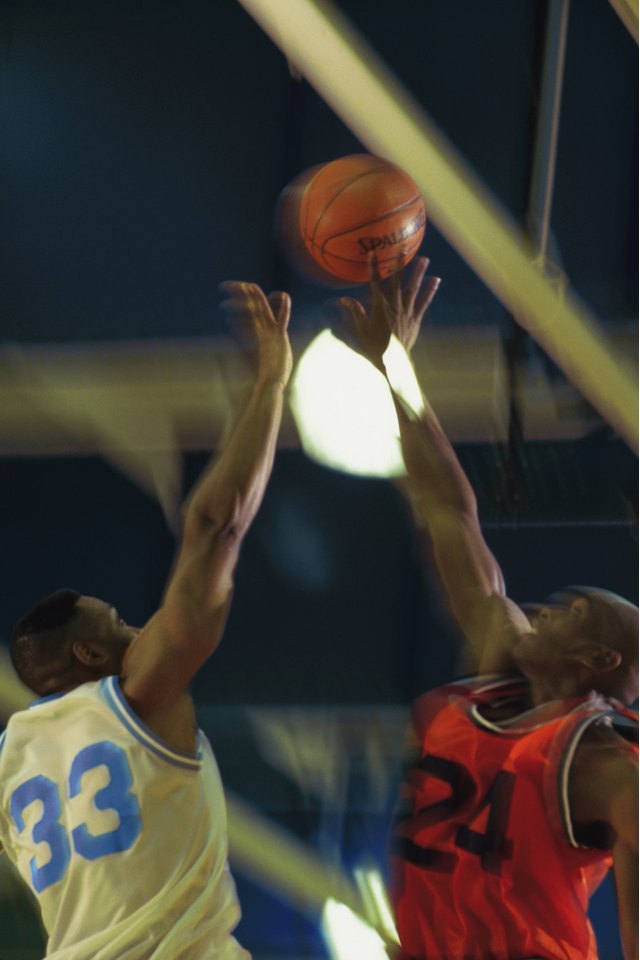 Stand next to it with your left side facing the box. Keep your chest up and core tight as you slightly bend your knees. Explosively leap from the ground and completely on the box. You can choose to step down or lightly jump back into the starting position. Once you finish your prescribed repetitions, switch sides. Make sure you vary the height of the boxes during the workout, challenging yourself to increase the height.
Stand next to it with your left side facing the box. Keep your chest up and core tight as you slightly bend your knees. Explosively leap from the ground and completely on the box. You can choose to step down or lightly jump back into the starting position. Once you finish your prescribed repetitions, switch sides. Make sure you vary the height of the boxes during the workout, challenging yourself to increase the height.
Focus:
- Explosive Power
- Agility
- Jumping Ability
7. Uphill SprintsOur final workout is a classic that is used by athletes in every sport, but uphill sprints have a unique place in the basketball player’s workout. Uphill sprints dramatically improve your endurance levels, but more importantly for performance, they skyrocket your explosive power and lower body strength.
How to Perform: Begin with a warm-up before tackling sprints. Starting from the bottom of a hill, give yourself about 10 to 20 feet to work up your speed.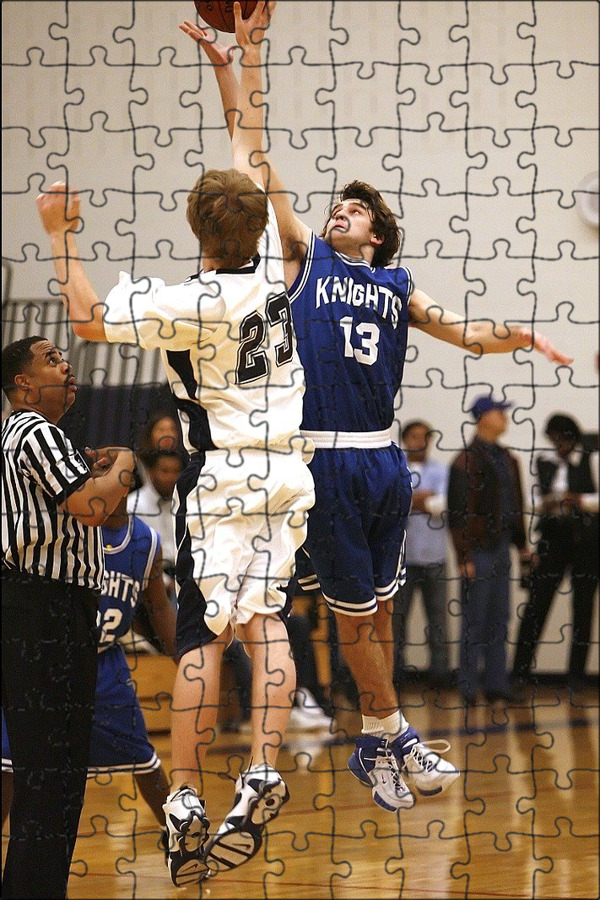 Run for those 10 to 20 feet then once you hit the hill, go all out. Run as fast as you can until you reach the top of the hill, walk back down, rest for a few moments, and do it again. Do not sprint down the hill.
Run for those 10 to 20 feet then once you hit the hill, go all out. Run as fast as you can until you reach the top of the hill, walk back down, rest for a few moments, and do it again. Do not sprint down the hill.
Focus:
- Explosive Power
- Lower Body Strength
Get More Training Drills
TOP 10 JUMP EXERCISES - maaario's blog
It is very important for a basketball player to have a high jump. Moreover, each player entering the court must have trained legs to perform explosive work. Today we will analyze the 10 most effective exercises to increase the jump.
So, let's begin. First, let's look at strength exercises:
1. Barbell squat. Weighted squats develop all leg muscles, abdominals and lower back muscles. Thus, this is the only exercise that allows you to strengthen all the muscle groups necessary for high jumps. We recommend that you sit at least until your thighs are parallel to the floor.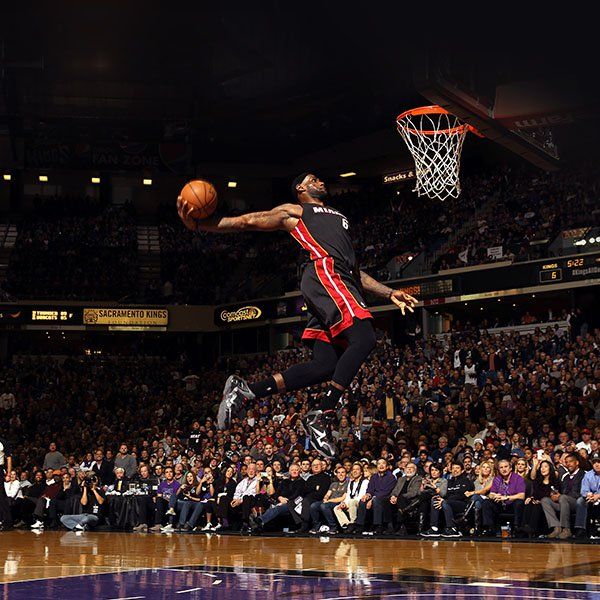 When doing a squat, make sure that the knees do not go ahead of the socks, because in this case there is a high probability of damaging the ligaments, and in basketball they always get a lot of stress anyway;
When doing a squat, make sure that the knees do not go ahead of the socks, because in this case there is a high probability of damaging the ligaments, and in basketball they always get a lot of stress anyway;
2. Squat with a barbell on a pedestal or bench. The exercise is similar to regular barbell squats. However, it has its own peculiarity. A cabinet or bench is designed to limit the amplitude of squats. This is necessary in order to already use explosive power. You should sit down in two counts. As soon as you touch the bounding surface with your hips, you abruptly get up to the starting position. Thus, you provide a slow stretch and a fast contraction of the thigh muscles. This exercise is performed with a lighter weight than a regular squat. Up to 70% of the maximum;
3. Snatch. Great weightlifting exercise. Perfectly develops intermuscular coordination, which is very important in basketball. Plus, explosive strength is trained and most of the muscle groups involved in the jump are alternately involved in the work.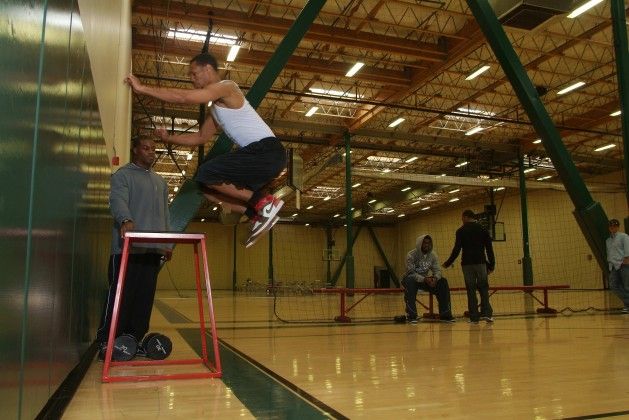 Watch your back while doing this exercise. Start doing with small weights so as not to get injured right away;
Watch your back while doing this exercise. Start doing with small weights so as not to get injured right away;
4. Forward lunges with dumbbells. In this exercise, you will thoroughly work out all the muscles of the thigh and also use the back stabilizers. An excellent exercise for training the endurance of the thigh muscles. When performing, special attention should be paid to the position of the knee at the time of lowering. It should not protrude beyond the toe. Otherwise, there is a chance of overloading the knee joint;
5. Stepping onto the step with dumbbells. This exercise will allow us to train the pushing process. This point is very important if you want to make noticeable progress when training your jump. Unlike lunges, you can do this exercise with more weights. Don't rush when doing it. Remember that too intense movements will lead to premature fatigue. It is, after all, a strength exercise.
So, we have analyzed the exercises aimed at strength work and at strengthening and developing muscle fibers.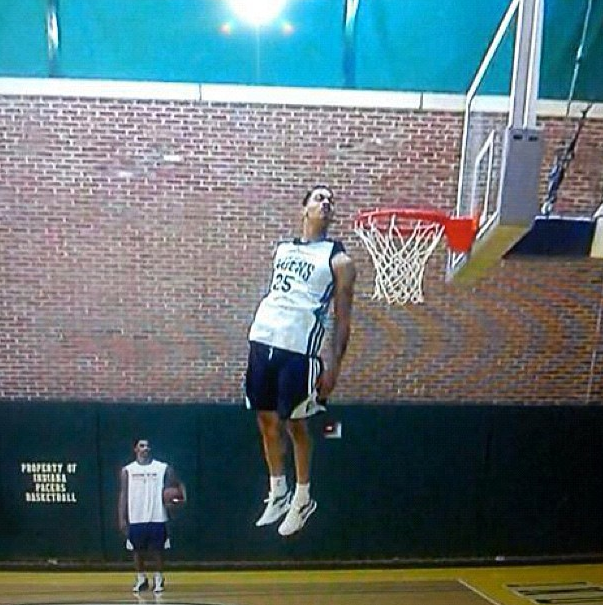 All exercises must be performed in 4 sets, including 10-12 repetitions. However, the number of repetitions in squats on a bench or bench, lunges forward with dumbbells and stepping on a step with dumbbells, we periodically recommend increasing to 16-18. This will allow your fibers to work in a slightly different way, which will also have a beneficial effect on your jump.
All exercises must be performed in 4 sets, including 10-12 repetitions. However, the number of repetitions in squats on a bench or bench, lunges forward with dumbbells and stepping on a step with dumbbells, we periodically recommend increasing to 16-18. This will allow your fibers to work in a slightly different way, which will also have a beneficial effect on your jump.
Next, consider jumping exercises for developing explosive strength, coordination and footwork speed, which is very important when training to jump.
1. Working with barriers. Using practice hurdles is an excellent way to develop fast footwork, coordination, leg hop and power. Hurdles are used in many professional basketball clubs. There are several steps to increasing the difficulty of training with hurdles. The main ones include regulating the height of the barriers and increasing the intensity of the footwork. Do not rush to immediately start with high obstacles and high speeds. Increase the difficulty gradually;
2. Running work. First of all, these are sprints with full gear at distances of different lengths and shuttle running. With such training, we will qualitatively work out a quick start, repulsion of the legs, and also prepare ourselves for the work at a ragged pace, which is necessary during the game. We recommend varying the length of the distance. Especially in the case of a shuttle run;
Running work. First of all, these are sprints with full gear at distances of different lengths and shuttle running. With such training, we will qualitatively work out a quick start, repulsion of the legs, and also prepare ourselves for the work at a ragged pace, which is necessary during the game. We recommend varying the length of the distance. Especially in the case of a shuttle run;
3. Jumping to the ring. The exercise is performed with two legs. In the starting position, the legs are shoulder-width apart. This exercise perfectly trains balance and simulates the work of the body during the game. We divide jumps into two types. These are low-intensity jumps that are designed to work on footwork, landing, take-off and peak jumping. As well as serial jumps. In basketball, a very important factor is serial jumping, that is, the ability of an athlete to make several jumps in a row with the same efficiency. In the fight under the ring, this can be a determining factor. Therefore, we must work out both options for jumps;
4.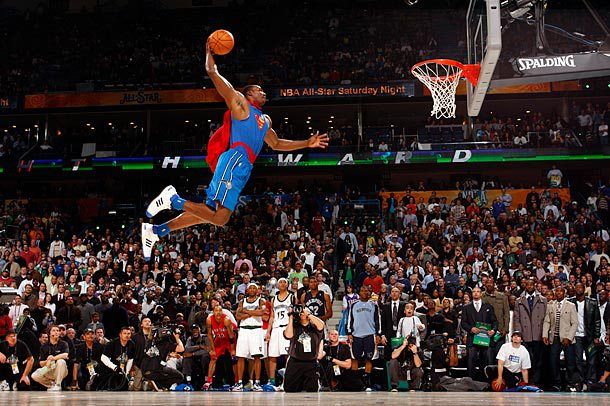 Jumping on the pedestal. This is a great exercise to practice your jumping skills and increase your jump height. When performing the exercise, do not narrow the distance between the legs, they should be shoulder-width apart. When landing on the bollard, try to transfer the load exclusively to the socks. In this exercise, it is important to use your hands. Thus, we involve in the process all the muscle groups involved in the jump when playing basketball. We vary the load by increasing the height of the pedestal;
Jumping on the pedestal. This is a great exercise to practice your jumping skills and increase your jump height. When performing the exercise, do not narrow the distance between the legs, they should be shoulder-width apart. When landing on the bollard, try to transfer the load exclusively to the socks. In this exercise, it is important to use your hands. Thus, we involve in the process all the muscle groups involved in the jump when playing basketball. We vary the load by increasing the height of the pedestal;
5. Jumping from the depths. This exercise is aimed at practicing a repeated jump or a jump from a jump. Standing on the edge of the pedestal, you jump to the floor and then immediately jump as high as possible. Use your hands while doing this. Plus, landing is being worked out. Again, the main load should go to the socks, that is, to the calf muscle.
So, we have considered the basic dynamic jumping exercises. We recommend that you perform them on days free from game training.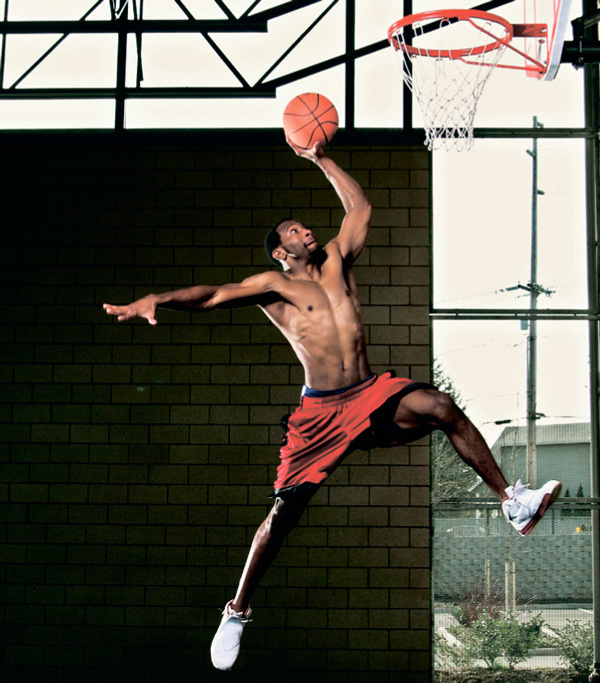 Try to do so many repetitions so that there is no distortion of technique. This will avoid muscle injuries and unnecessary stress on the joints.
Try to do so many repetitions so that there is no distortion of technique. This will avoid muscle injuries and unnecessary stress on the joints.
Together, all the exercises discussed in this video will lead to inevitable progress and an increase in your jump. But once again we draw your attention to the fact that you should not immediately expose yourself to serious stress. After all, in training, the main thing is to make yourself better, and not vice versa.
So, that's it. Subscribe to our channel, ask questions in the comments and remember that a lot of interesting things are ahead of us.
How to increase the jump? 5 tips
Every basketball player dreamed of jumping higher.
Every basketball player dreamed of jumping higher.
LOOKING AT MICHAEL, KOBE, VINC AND LEBRON? WANTED TO JUMP ALSO HIGH AND SCORE FROM THE TOP? PRACTICALLY EVERY BASKETBALL PLAYER WANTED THIS.
We asked our coach Sergey Nagorny to give 5 tips to help improve your jump.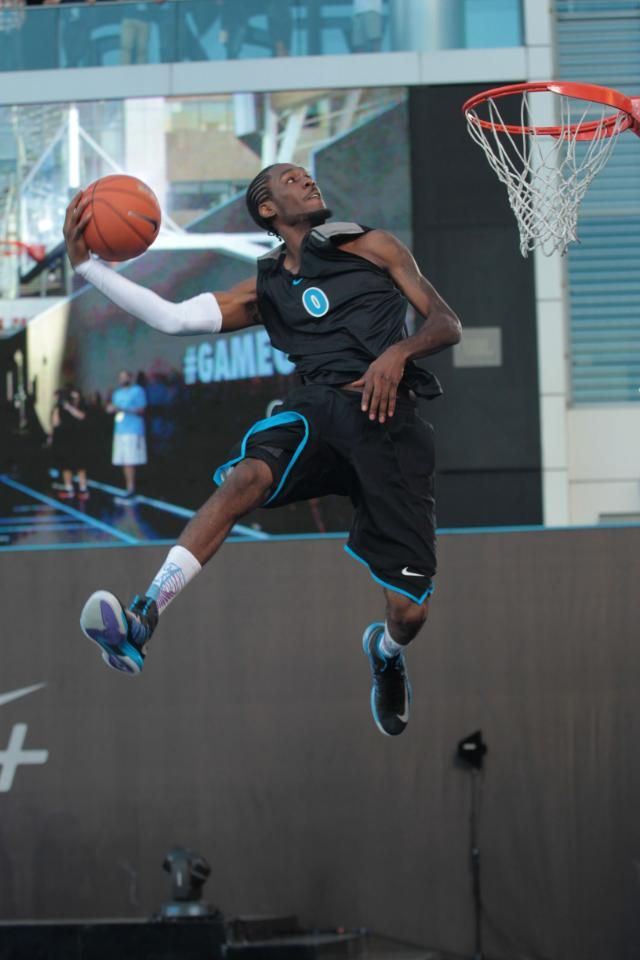
We asked our coach Sergey Nagorny to give 5 tips to help improve your jump.
"The more power you have and the more you can apply power to the ground, the higher you can potentially jump. To increase your strength, you can choose any exercise: pulls, squats, lunges. Do what you like best and gradually increase the weight of the weights. "
Sergey Nagorny
Physical trainer training
Strength increase
Speed increase
"In addition to strength, the jump depends on speed, so this component also needs to be worked on. The easiest way is to sprint for short distances from 10 to 40-60 meters, and also work with sleds. "
Sergey Nagorny
Physical trainer training
"This advice applies to both the workout itself and resting between sets, as well as recovery between sessions. People often start turning speed and jump workouts into endurance work. If you don't recover enough between sets and between workouts, then you you will never develop your jump to the maximum. "
"
Sergey Nagorny
Physical trainer training
Proper rest
"Same skill as throwing, snatching, etc. You have to be able to move efficiently. Jump more often - move more efficiently, but don't forget about recovery."
Sergey Nagorny
Physical trainer training
Jumping is a skill
Sleep more and eat right
"We are all looking for ways to recover better and use different modern gadgets to do this, but it all starts with simple things. Good sleep and proper nutrition are must-have items for a better recovery that everyone has at hand."
Sergey Nagorny
Physical trainer training
SIGN UP
Coach: Sergey Nagorny
Professional athlete, works with athletes from Russia and the CIS. Performing dunker, creator and host of the Action video channel about athleticism in team sports.
Do you want to increase your jump and improve your athleticism? Look for "Basketball Athleticism" and "White Men Can Jump" workouts in our schedule and sign up.